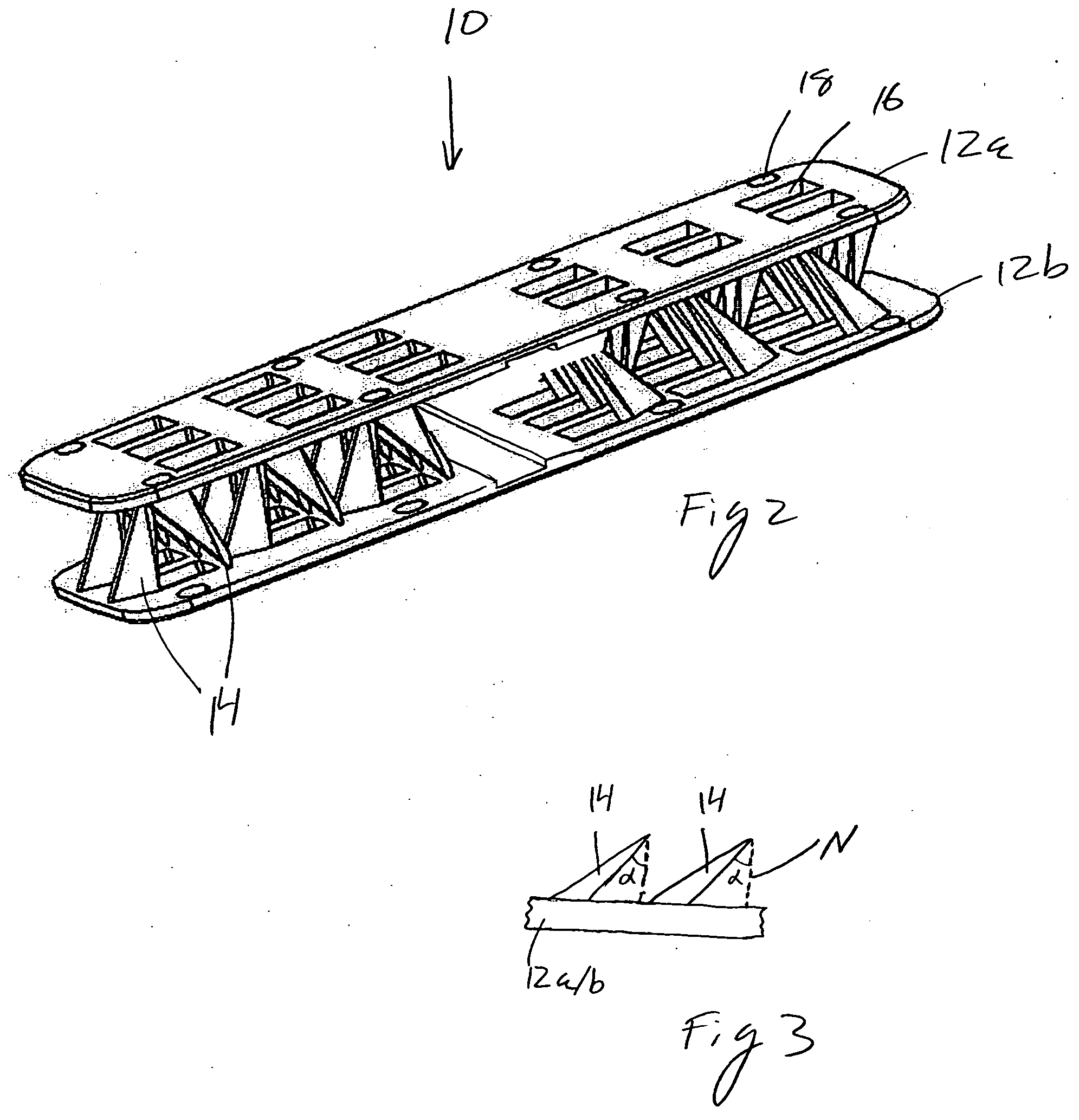Tissue repair apparatus and method
a technology of tissue repair and flexor tendons, which is applied in the field of repair of severed tendons, can solve the problems of difficult tissue repair, tendons in hand and wrist, and flexor tendons that are difficult to repair, and achieve the effect of easy implementation
- Summary
- Abstract
- Description
- Claims
- Application Information
AI Technical Summary
Benefits of technology
Problems solved by technology
Method used
Image
Examples
Embodiment Construction
[0022] The present invention is a tissue approximation assembly, and a method of implementing the same, that securely and reliably fixates two sections of tissue together while preserving mobility and promoting healing. The present invention is described in the context of fixating sections of flexor tendons of the hand together, but the disclosed apparatus is neither limited to the tendons of the hand nor tendon tissue in general and any appropriate tissue can be fixated together using the approximation assembly of the present invention.
[0023]FIGS. 1 and 2 illustrate the approximation assembly 10 of the present invention, which includes top and bottom tine plates 12a / 12b configured to engage with opposing sides of a severed tendon. Tine plates 12a / 12b may be made of any appropriate biocompatible material, and preferably a biocompatible material which also may be biodegradable. Each of the tine plates 12a / 12b is generally flat, and includes a plurality of tines 14 extending therefro...
PUM
 Login to View More
Login to View More Abstract
Description
Claims
Application Information
 Login to View More
Login to View More - R&D
- Intellectual Property
- Life Sciences
- Materials
- Tech Scout
- Unparalleled Data Quality
- Higher Quality Content
- 60% Fewer Hallucinations
Browse by: Latest US Patents, China's latest patents, Technical Efficacy Thesaurus, Application Domain, Technology Topic, Popular Technical Reports.
© 2025 PatSnap. All rights reserved.Legal|Privacy policy|Modern Slavery Act Transparency Statement|Sitemap|About US| Contact US: help@patsnap.com



